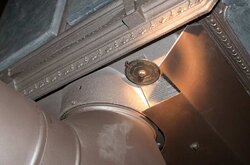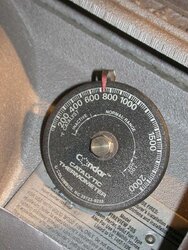I got a Woodstock Fireview as my primary heat source about three years ago. Coincidentally I've been lurking here ever since which has sped up the learning curve on how to use these stoves. I've been doing everything by the book up until now & find that it does take a while to get this baby up to operating temperature. Not really complaining, I love this stove & love spending time in front of it. But this year I got curious & decided to do some experimenting. I put a magnetic thermometer on the single wall chimney stack about three feet from the stove & have been engaging the catalyst based on this temperature rather than the thermometer on the top of the stove. What I am doing is building a hot but small fire, letting it go until it is roaring & the outside of the metal chimney is around 400 or so. Then I engage the catalyst. In this totally unscientific experiment I find that the stove gets up to operating temperature much faster. So my question for all of you who know more than I do is- is this a good idea or am I doing something stupid or am I deluding myself that anything is different?
Thanks so much
Brian
Thanks so much
Brian



